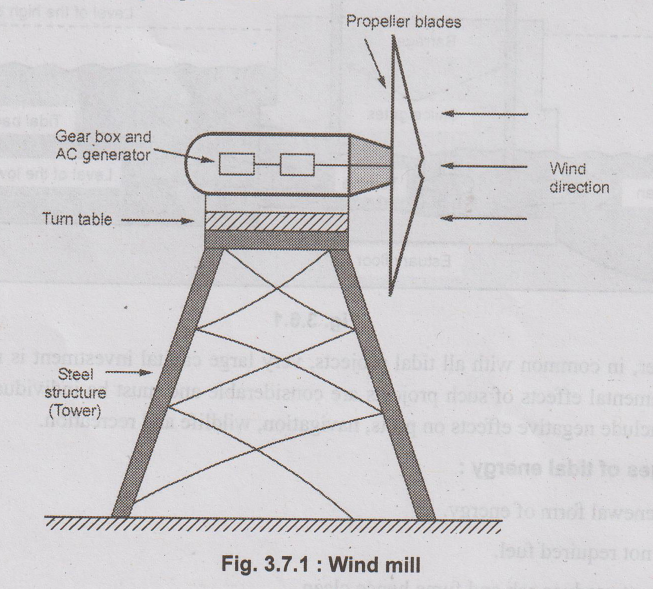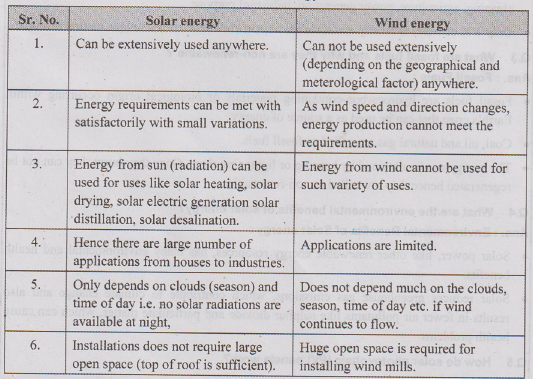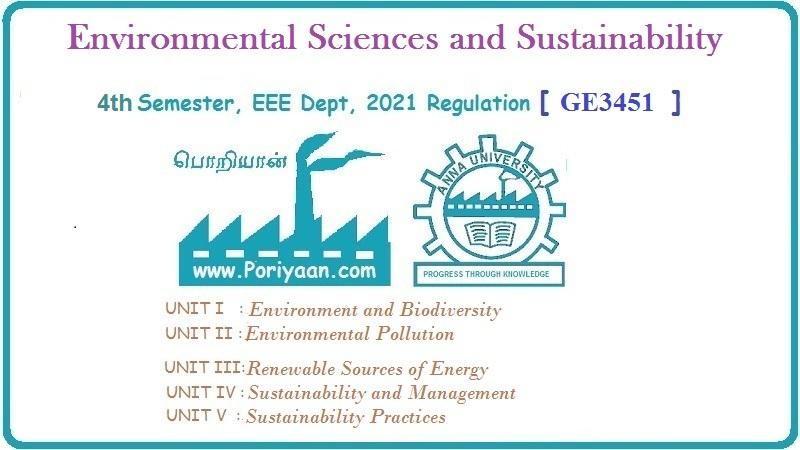Environmental Sciences and Sustainability: Unit III: Renewable Sources of Energy
Wind Energy
Working Principle, Methods, Wind mill Diagram, Advantages, Disadvantages
• Wind energy is kinetic energy of moving air. The uneven absorption of solar radiation by earth's surface causes differences of temperature, density and pressure which produce air movements.
Wind Energy
•
Wind energy is kinetic energy of moving air. The uneven absorption of solar
radiation by earth's surface causes differences of temperature, density and
pressure which produce air movements.
•
Wind power is a function of wind, speed. Wind speed increases with height on
earth.
1. Methods of Harnessing Wind Energy
•
The wind energy can be harnessed by using wind mills.
1.
Wind mills
•
The wind mill structure consists of huge rotating blades mounted on a tower.
The blowing wind strikes on blades of wind mill making it to rotate
continuously.
•
The blades are linked to gear box and AC generator, which can drive number of
machines like water pump, heater etc.

2. Advantages of Wind Energy
1.
The entire process of wind power is non-polluting.
2.
Wind energy is one of the sustainable source of energy.
3.
Wind energy is renewable.
4.
Wind energy is available at free of cost.
5.
Suitable for remote locations.
3. Disadvantages of Wind Energy
1.
Wind is an intermittent source, and the intermittence depends on geographic
distribution of wind. Therefore, it can not be used as sole resource of
electricity and requires backup or storage system.
2.
Storage technology is not fully developed.
3.
Damage of local environment by deforestation and hence loss of biodiversity.
4.
Birds may get killed.
5.
Noise pollution in local area may affect TV reception.
4. Comparison of Solar and Wind Energy
 Review Question
Review Question
1. Discuss the
advantages and disadvantages of wind energy.
Environmental Sciences and Sustainability: Unit III: Renewable Sources of Energy : Tag: : Working Principle, Methods, Wind mill Diagram, Advantages, Disadvantages - Wind Energy
Related Topics
Related Subjects
Environmental Sciences and Sustainability
GE3451 ESS 4th Semester | 2021 Regulation | 4th Semester EEE Dept 2021 Regulation
